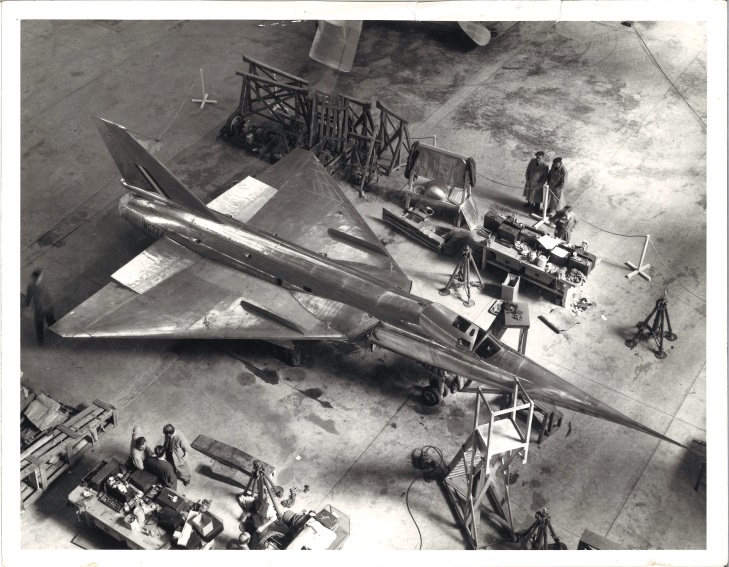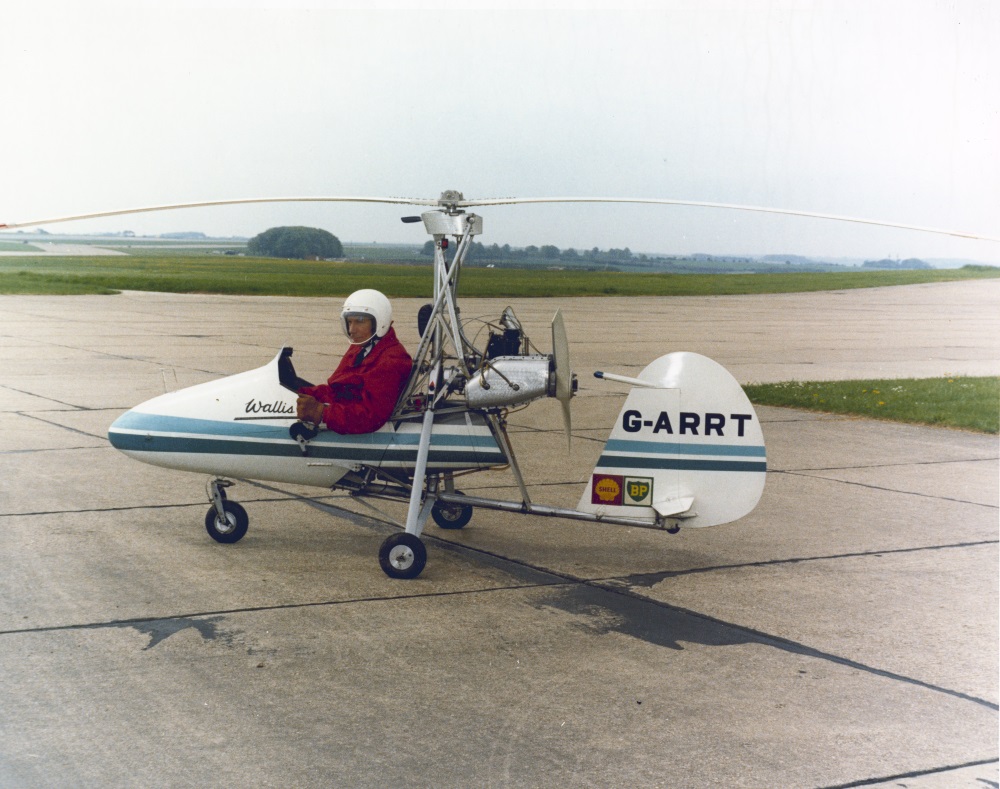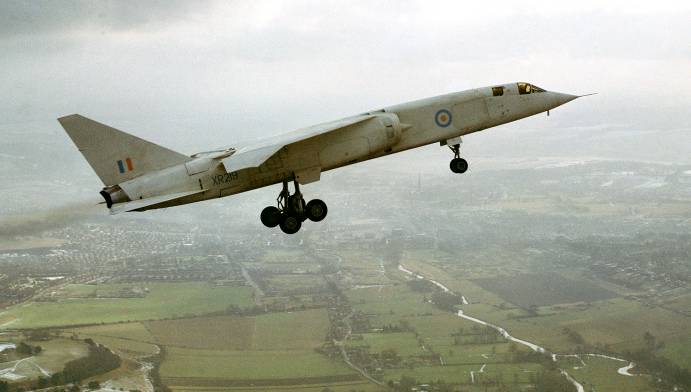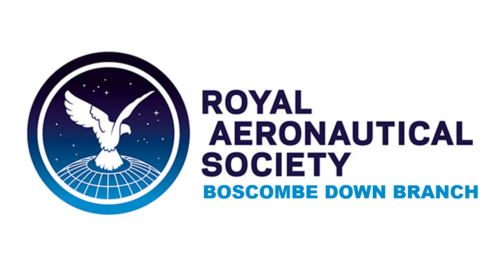1950s
The 50s saw A&AEE enter a golden age of British aeronautical development with many significant British aircraft making their first flights from the airfield and subsequently undergoing testing and development to enter service. Most notable were the Hawker Hunter in 1951, the Handley Page Victor V Bomber in 1952, the Lighting in 1954 and the Folland Gnat (the original mount of the Red Arrows) in 1955. There was also a stream of experimental aircraft being flown from the airfield. Many of which helped develop other key types such the Avro 707 which provided data for the Vulcan Bomber. Also of note was the Fairey Aviation FD2 which was brought to the airfield and went on to break the World Air Speed record at 1132 mph on March 10th 1956 and then subsequently modified to help develop Concorde.

Further expansion of the site buildings was planned but only a few major items were completed. Notably the Weighbridge hangar in 1955 which, in the late 40s, was part of the post-war expansion programme that was to replace the WW1 hangars with four similarly sized hangars and Building 456 to provide better accommodation for the sites technical and administrative staff. A new control tower was also built in 1952 and sited on the south side of the runway (the original control or watch tower still exists today and is used for operational purposes as well as housing the Meteorological Office). Extra hangar space was addressed with 2 of the assembly hangers used by Supermarine at the old High Post airfield re-sited at the eastern end of a new dispersal area.
1960s
Flight testing from Boscombe Down in the early 60’s included one of the more unusual first flights in that the aircraft was actually built on the site. This was Wg Cdr Ken Wallis’ Prototype WA-116 Autogyro, G-ARRT which flew in 1961.

During the 60s, the pace of aircraft and weapons testing continued with more novel aircraft types arriving. Possibly one of the most controversial aircraft being the BAC TSR2 which made the last maiden flight from the airfield in September 1964. The TSR2 was designed to penetrate heavy air defences and deliver weapons to major targets behind enemy lines. Although the TSR2 performed well, the Government at the time cancelled the aircraft, due to rising production and development costs in favour of the General Dynamics F-111 (a type that would return to Boscombe Down in another context). This too fell by the wayside due to costs, meaning the Blackburn Buccaneer, originally disregarded filled the gap and became a focus of testing on into the 70s.

More building work continued with a new hangar and building complex on the south side of the airfield that made use of the old ‘V’ force rapid dispersal site (which had ensured Boscombe Down was on the front line during the Cold War). Bldg 801 as it was known opened in 1963, and became the main focus for helicopter operations. In this context Britain’s helicopter industry was expanding with testing being carried out on many indigenous and adapted US designs, such as the Bristol Belvedere and Westland Wessex.
The building activities included a number of specialist facilities many of which remain in use today. Of note were a specialist rocket test stand for Blue Steel, a rotor testing site to support the Fairey Rotordyne, the Radio Environment Generator and the Environmental Test Hangar. The latter has enabled aircraft and their systems to be subjected to large temperature extremes without having to transport aircraft and personnel to other test sites around the world.
The latter part of the decade saw two other organisational changes. The Empire Test Pilots School (ETPS) returned to Boscombe Down in 68 and occupied one of the older hangars on site where it remains today and an Apprentice training scheme was introduced in 1969 that has become the formal QinetiQ Apprentice Training School (QATS). Over the years Graduates of QATS have moved into a wide range of roles within industry and MOD with great success

I was stationed at Bosscombe Down in1953 it was my first posting in the RAF. I worked in aircraft fuel depot refueling and unloading tankers, very scary i was small climbing onto the huge vehicles, there was what we called a fuel gantry where we walked a skywalk . I am 90 years old retired as a chief warrant officer in the RCAF after 38 years service.
My dad was a firefighter here,he is the same age as you his name is Stanley George Wyatt
I was based at Boscombe on C sqdn (Royal Navy) 1968-late 70 in the hangar were a/c Scimitar,
Vixen (Martel trials) Buccaneer mk2, Sea Balliol and Phantoms FGR 1(trials unit) of which I was part of. Whilst I was there the scimitar was cut up in the hangar. Sad end. Interestingly, the vixen martel trials, every time a missile was fired and it was successful, they put on a 5 gallon barrel of cider in the club, which was welcomed by all.
The sea balliol, used by the aircrew, always required a maintainer to fly with them purely to operate the manual undercarriage.
In July 1970, was the end of the navy rum tot, and this being an “RAF” base, we were not entitled to the rum ration, however, unbeknown to us maintainers, the CO flew a vixen to RNAS Yeovilton without an observer, and returned with a barrel of rum in the observer seat. Needless to say, the CO called a general “make and mend” and we all went to the club so that we could celebrate the end of the tot after 200 years of tradition.
As I was on the phantom trials aircraft, we had many and various trials in varying locations, one location frequently visited was RAE Bedford, and there we had the dry land catapult, arrestor trials, and reheat jet blast heat dissemination trials, with various metals used, to test heat resistance and water heat dissipation for use onboard HMS Ark Royal, all with various results. The catapult trials always started later in the morning, because the stokers had to raise steam, as in a true flight deck catapult. These went well normally, other trials, like the arrested landings had mixed results. Both camera pods and observers in the landing areas, various off centre landings were trialled to test strain on the arrestor wires were used. At 15 foot off centre left, turned out to be the most interesting. The aircraft landed and caught the wire, little did we know, that the left retard tube wire snapped, resulting in the left main connection failing. This entailed the arresting wire travel through the hook until the connection bracket caught in the aircrafts hook, immediately bending the hook 30degrees and yawing the aircraft violently to port. Every credit to the aircrew, who hit reheat and managed to take off before travelling over the grass. At the same time, we maintainers, watching this unfold, saw the arrestor wire travelling across the runway towards us, thank heavens for the camera posts, as it stopped causing us injury. Much later on the squadron, we were shown camera footage, showing the panels underneath the aircraft flexing open and then closing. Later this aircraft was given permission to fly to Brough for repair, flying wheels down and at limited height and 250kts max. It was here that the tail section was found to have sheared approximately 35% of the retaining bolts on the tail section. I could be corrected on that last piece.
As an interesting aside, Bedford hosted the blind landing flying unit. This came to our notice, because we were unable to fly in the morning due to fog. Whilst waiting for this to clear, we could hear a large jet aircraft doing touch and gos on the airfield, very brave people.
Also whilst there, I saw the Short SC1 “flying” which later ended up at the fleet air arm museum, of which later in my career, I was the last Royal Navy Chief in charge of the naval party at the museum.
Back at Boscombe down, we were readying for deck trials on HMS Eagle. This went well considering that the rolls Royce Spey engineer was limited to 25 flying hours, meaning we did the first engine change at sea. This engine is a tight fit at the best of times, but below deck, the hangar floor is definitely not flat, making for an interesting removal. All in all it was considered a great success.
The next trial was to be onboard HMS Ark Royal, but in the interim, I had an argument with a car and broke my leg, meaning I missed out on this trial, co I cannot comment on this trial. Hot weather trials were due to occur in Malta, but I due to recovery I was not allowed to attend, on account of having a walking stick. This however did. It stop me seeing the aircraft off and strapping in the pilot, using my stick to hang onto the hatch combing. This obviously raised comments and eyebrows.
My time at RAE Boscombe Down was an experience, which I will always remember and never forget.